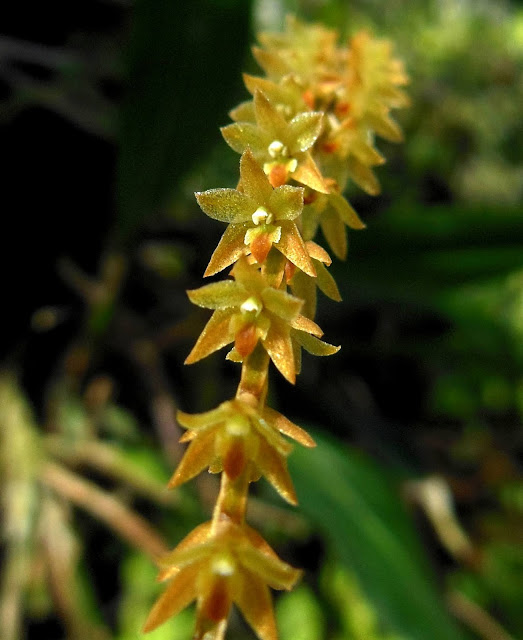The elegant Dendrochilum unicallosum
Let us be honest: Dendrochilum deserves more recognition that it is currently being bestowed with. Despite being a diverse genus, very few species are in general cultivation and being propagated, which is a crying shame considering the many attractive virtues that other lesser known species offers to the discerning and rabid collector. So please allow me to introduce to you a little-known orchid from the genus Dendrochilum- D. unicallosum.
Dendrochilum unicallosum was described by Louis O. Williams in 1937, based on fragments collected by Augustus Loher in the province of Rizal on September 1909. For a number of decades, this species remained one of the least known of Philippine dendrochilums, until plants began to appear in the trade, which is said to have come from Nueva Vizcaya on central Luzon.
This is a quite straggling plant with relatively long, curved to often pendent rhizomes which bear the pseudobulbs at 1.5 cm. intervals. These pseudobulbs are up to 4.4 cm. long by 7 mm. in diameter, dark green and with longitudinal furrows; younger ones are covered at their bases with pale brown cataphylls that are spotted with minute dark brown flecks. The broadly lanceolate, 5-veined, quite thinly textured, dark green leaves have petioles up to 2.2 cm. long and blades to 15.5 cm. in length by 2.8 cm. in breadth. The growth habit may be rather untidy, but the inflorescences are a different story. The very slender, hysteranthous* inflorescences reach a total length of 23 cm. (9.2 in.) with usually erect peduncles and pendent rachis that bear up to 76 flowers (pers. obs.). This is one of those dendrochilums that are simply elegant when in bloom.
Perianth segments are commonly pale green with a labellum of soft green. The column is greenish-white. However, some specimens have blooms with an orange tint, and there are those with orange labella. The flowers are 4 mm. high and wide and faintly fragrant, and last up to 2 weeks. The species name unicallosum refers to a single, large callus at the base of the labellum, which is decurrent to two parallel ridges that terminate at the junction of the side lobes and the midlobe. Pretty sure that you are learning some bit of Latin when you follow this blog 😁 I have attached here a photo of the type specimen with accompanying sketches, including that of the labellum which clearly shows the callus and the pair of ridges.
It would seem that this species exhibit a non-defined blooming period, and flowering appears to commence upon the maturity of the subtending pseudobulb. As mentioned above, the type specimen was collected during the month of September, but I have also noticed this species blooming on the months of December, January, and February, and there is at least one unconfirmed anecdote of it blooming in May.
 |
*A hysteranthous inflorescence is one which appears on fully matured stems, leaves, or pseudobulbs. Inflorescence types are very important in the delimitation of sections within Dendrochilum, as well as Coelogyne. Dendrochilum unicallosum is from subgenus Platyclinis, which contain species with synanthous inflorescences, or those that form simultaneously with the developing pseudobulb/stem, and leaves. However, its other characters are in agreement with the rest of the species contained.








Curious how long will the flower last.
ReplyDeleteThe flowers last for up to two weeks, on average.
DeleteOkey thank you
Delete